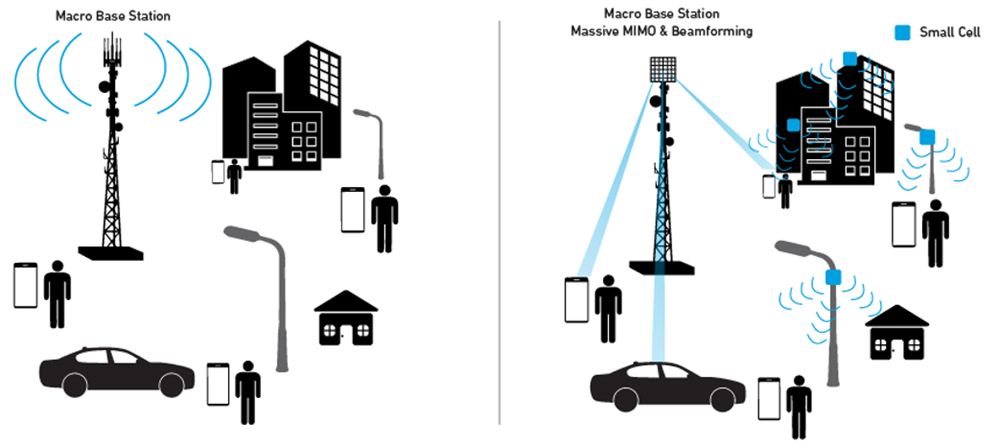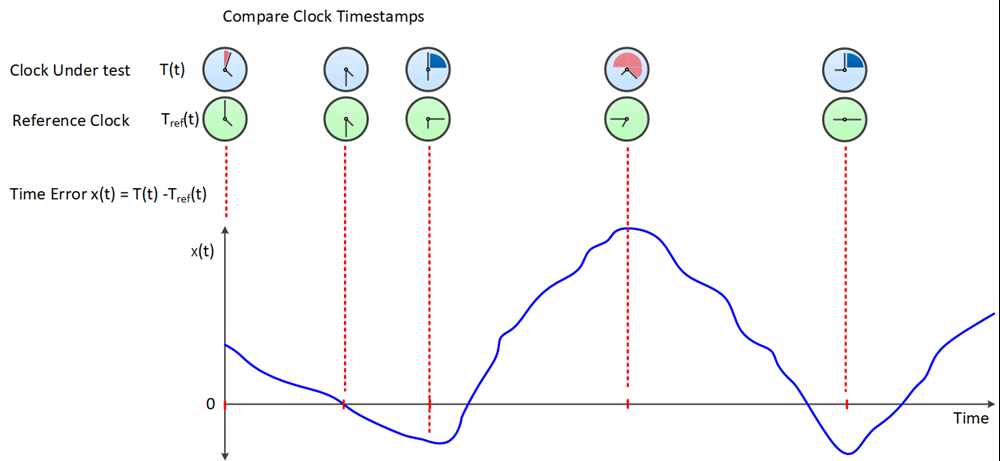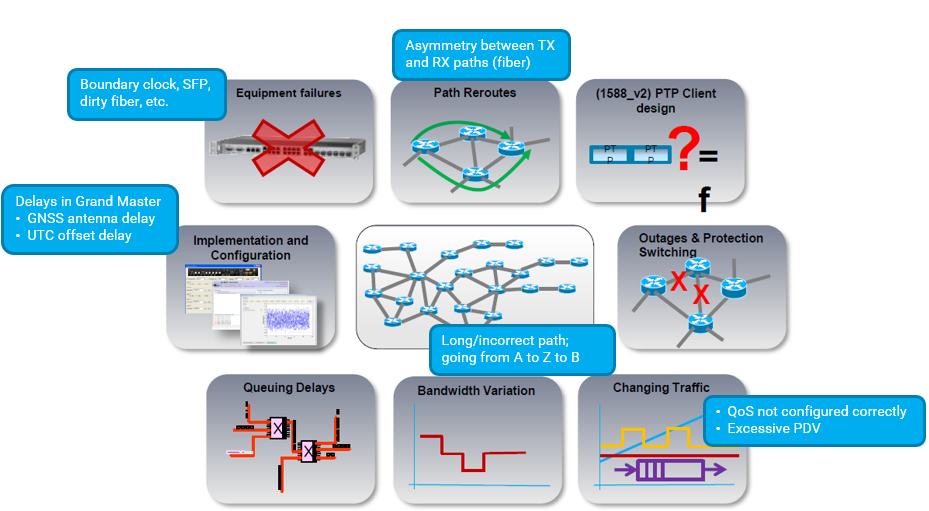Timing and synchronization: why it's critical for 5G networks
There’s been a lot of buzz around network synchronization and why it is critical for 5G networks. In fact, the concept of timing and synchronization is not new to the wireless world. Previous network generations (i.e., 2G, 3G, and 4G) all required a certain degree of timing and synchronization for correct handover to occur between macro base stations and user equipment. However, unlike its predecessors, 5G is bringing more stringent performance requirements to wireless networks and mandating nanosecond timing between the various elements in the radio access network (RAN).
Why is timing and synchronization critical in a 5G world?
As more radios and small cells are being deployed to achieve the right level of coverage and performance, it is vital that they are in-synch with each other and sharing the same time reference with all surrounding macro cell towers, user equipment and RAN elements. Furthermore, timing accuracy is needed to support technologies like Time Division Duplex (TDD), where both the uplink and downlink are on the same frequency, and beamforming which allows beams to be directed to multiple users and IoT devices such as sensors, machines, robots and connected cars. And there are other advanced technologies that come with 5G, like dynamic spectrum sharing (DSS), carrier aggregation and massive MIMO—all requiring good timing to operate correctly.
These technologies give rise to complexities in network synchronization not seen in earlier generation networks. For example, TDD uses one dedicated frequency band for both the downlink and the uplink. As each direction must transmit during specific time slots, the synchronized timing in frequency and in phase between the user equipment and the radio is critical to ensure that the downlink and the uplink are not interfering with each other. The deployment of many more small cells can also cause big timing issues. If they are not on the same time reference, they could interfere with each other and impact RF performance. A timing issue on one cell site router risks affecting many radios. In turn, timing issues could lead to handover failure, corruption of transmitted data, poor throughput and reduced voice quality—ultimately impacting the performance of 5G networks. To learn more, watch our webinar: Why timing and synchronization is critical in 5G networks.

Figure 1. Advanced technologies bring complexities to 5G network synchronization.
When do we need to validate timing accuracy?
Let’s look at a couple of scenarios:
During 5G radio and small cell rollout and turn-up phases, operators need to make sure, from day one, that the timing is accurate and reliable, ensuring that networks are ready for future expansion. Throughout the maintenance and troubleshooting phases, operators need to eliminate as many variables as possible and quickly identify the root cause of issues. If a timing issue is suspected or an RF performance problem is being investigated, a first step is to make sure that the timing is accurate before continuing to test other elements in the network.
What are some of the requirements for network synchronization and what to look for?
There are several ways to make sure every network element is synchronized together in frequency and in phase. The first option is to have a GNSS receiver at every cell site, which up until recently was the preferred method in some regions like the U.S. The second option gaining popularity since the introduction of 5G is 1588 PTP (Precision Time Protocol). In its most basic explanation,1588 PTP uses IP/Ethernet switching/routing to distribute highly accurate timing information to every element across the network that requires synchronization.
Time error (TE) is one of the key metrics used for measuring clock inaccuracy. It is the difference in time between the time of the clock under test T(t) and the time given by a high-quality reference clock Tref(t). If the clock under test is in advance of the reference clock, a positive TE will be measured. If the clock under test is trailing behind the reference clock, the TE will be negative. The goal of timing accuracy is to achieve a TE measurement as close to 0 as possible.

Figure 2. Variation of TE over time.
The 1588 PTP protocol was specifically designed to deliver the highest level of timing accuracy. The way 1588 PTP works is by having a grand master exchanging synchronization packets with the PTP client. These synchronization packets include timestamps that are used to calculate and correct the time between the master and the client. First, the master will send a sync message to the client with a timestamp (t1). The client will then receive this message and generate a second timestamp (t2). Next, the client will send a delay request message and create another timestamp (t3). The master will reply with a delay response and send a final timestamp (t4). At the end of these exchanges, the client has all the timestamps and can calculate the delay and adjust the time error with respect to the master. This correction mechanism is continuously running and correcting the time on the client side many times per second.
Another approach used for network synchronization is Synchronous Ethernet (SyncE), an ITU-T standard that facilitates the transference of frequency information from one node to another over the Ethernet’s physical layer and traced back to a reference clock – in the same way timing is passed in SONET. As 5G networks are deployed, SyncE will support the many applications that require accurate frequency synchronization and can be used in combination with 1588 PTP.
Validating a network’s timing and synchronization can be challenging as there are multiple variables to consider when trying to identify the potential root cause of timing issues. To add to that, a timing issue on a cell site router can affect many radios making it that much more complex to resolve a problem.
A few factors can increase the time error in a network or cause the 1588 protocol to work incorrectly such as, equipment failures, configuration issues, path reroutes by a router and outage and protection switching.

Figure 3. Examples of variables that can cause timing issues.
How to test timing and synchronization in 5G networks
When deploying or troubleshooting new 5G cell sites and radios, there are test tools that can quickly and easily assess whether SyncE and 1588 PTP services are active, validate clock quality level and SyncE frequency across the network and confirm timing accuracy by measuring time error between the base station and the grandmaster clock.
Traditionally, test solutions for time error have relied on costly and sensitive rubidium oscillators that need to be “warmed-up” and “disciplined” for more than 3 hours to get the highest level of accuracy. Consequently, cell techs spend nearly half a day validating timing accuracy at just one site rendering the process inefficient.
EXFO has introduced a different approach that accelerates the entire test process. By integrating a next generation, multi-constellation, high-accuracy GNSS receiver specifically designed for 5G, EXFO’s solution can achieve nanosecond accuracy in less than 20 minutes. This is 90% faster than any other timing test solution in the industry. In addition, the solution includes a stratum 3E oven controlled crystal (Xtal) oscillator (OCXO) to provide holdover measurement capability for scenarios where sky visibility for the GNSS receiver is not possible. Getting that level of accuracy in such a short prep time is really a game changer for time error measurement in the field.
Another key feature is the capability to measure time error directly through the fiber interface. EXFO's test solution acts as a PTP client and exchanges PTP messages and timestamps with the boundary clock. A key advantage of this solution is that any length of fiber test cable can be used between the device under test and the test instrument. This allows the user to move the test instrument away from the cell site router, use a longer fiber and ensure the best location for sky visibility. In the case where the cell site router is centralized in a C-RAN hub, it is even possible to measure the time error at the radio site directly on the fiber interface connecting this radio. This provides the easiest and most efficient way to validate that the timing is right and that it meets the stringent 5G timing requirements, from day 1.
Conclusion
As we mentioned earlier, 5G will require tighter synchronization in frequency and in phase to support stricter timing accuracy requirements and advanced technologies. That said, we are currently in the early stages of 5G deployments with mostly non-standalone architectures that rely partly on the existing 4G LTE infrastructure. But as 5G transitions to standalone—and more importantly, is required to scale in volume with the deployment of more radios and small cells serving many more connected users—the impact of timing issues will be far greater than what we saw in previous generation networks. And accurate timing and synchronization will be imperative to getting 5G done right.
Network synchronization is an in-depth topic and we have only covered a few key concepts here. To learn more on EXFO's latest timing and synchronization test solution, click on the learn more button.




